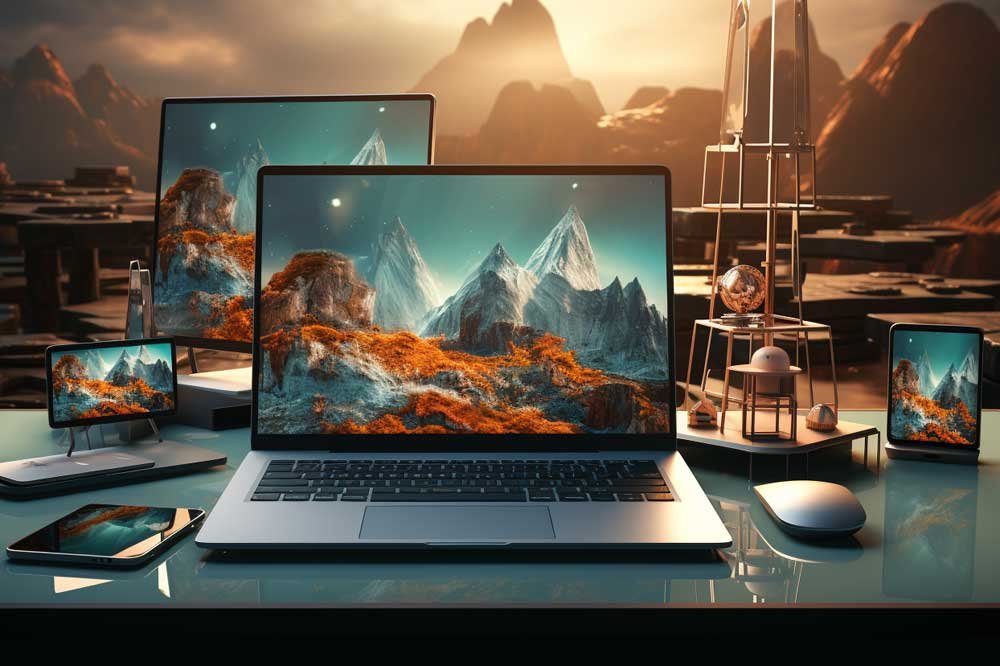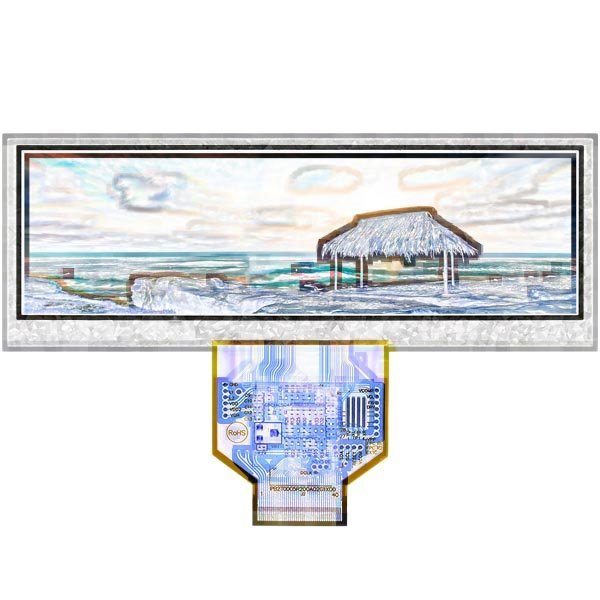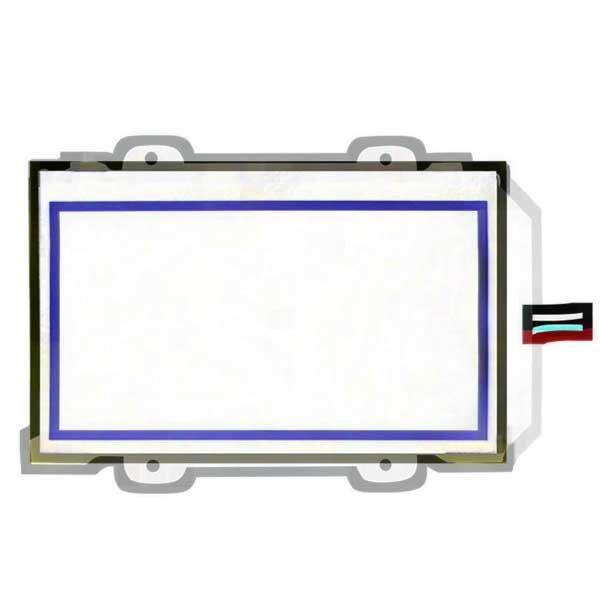Once upon a time, the world of technology was searching for a new way to display images and information. Scientists and engineers were on a mission to find a solution that could revolutionize the way we live, work, and communicate. And they succeeded! They created a technology that would change the world – Liquid Crystal Displays or LCDs.
From the late 1960s, when the first LCD prototypes were developed, to the present day, where LCDs are used in almost every device we own, the evolution of this technology has been nothing short of remarkable. In the 1980s and 1990s, LCDs started to gain popularity as people sought a more energy-efficient alternative to the traditional CRT (cathode ray tube) monitors. As the years passed, LCDs became thinner, lighter, and more versatile, making them ideal for a range of applications.
Have you ever stopped to think about how LCDs work? It’s simple! An LCD is made up of a layer of liquid crystals sandwiched between two glass sheets. When an electric current is applied, the crystals align to create an image. This image is then lit up by a backlight, giving us a crystal-clear display with vibrant colors and sharp detail.
The story of LCD technology is a tale of creativity, perseverance, and a vision for a better future. From its humble beginnings in the labs of scientists to its widespread use in homes and offices all around the world, the rise of LCD technology has been nothing short of remarkable. It’s a story of innovation and a better future, and we’re proud to be a part of it. So, sit back, and let’s explore the journey of LCD technology together.
Illuminating your world: The Rise of Liquid Crystal Displays
As technology advanced and society continued to evolve, the need for a more efficient and versatile display technology grew. The traditional CRT monitors were bulky, heavy, and consumed a lot of energy. Scientists and engineers rose to the challenge and embarked on a mission to create a new way of displaying images and information.
In the late 1960s, the first LCD prototypes were created, but the technology started to gain popularity. In the 1980s and 1990s, as people sought a more energy-efficient alternative to CRT monitors, LCDs started to make their mark.
But what exactly is an LCD? It’s a very simple concept. LCD stands for Liquid Crystal Display, and it is made up of a layer of liquid crystals sandwiched between two glass sheets.
When an electric current is applied, the crystals align to create an image, which is then lit up by a backlight to create a crystal-clear display with vibrant colors and sharp detail.
Over the years, LCD technology has continued to advance and improve. The displays have become thinner, lighter, and more versatile, making them ideal for a wide range of applications. Today, LCDs can be found in almost every device we own, from smartphones and laptops to televisions and digital billboards.
The rise of LCD technology is a testament to human creativity, perseverance, and a vision for a better future. From its origins in the labs of scientists to its widespread use in homes and offices all around the world, the journey of LCD technology has been nothing short of remarkable. It has changed the way we live, works, and communicate, and it continues to be an integral part of our lives.
So, let’s take a journey through time and explore the evolution of LCD technology. From its humble beginnings to its current state of the art, it is a story that is both fascinating and inspiring. A story of innovation, creativity, and a brighter future.
The Crystal-Clear Future: The history of LCD technology
Have you ever wondered how your phone screen, TV, or computer monitor can display crystal-clear images and videos? Well, the story behind it all is the history of LCD technology.
LCD stands for Liquid Crystal Display. It all started in the late 1960s when smart scientists first created prototypes of LCDs. People loved how LCDs were more energy-efficient than traditional CRT monitors. That’s why in the 1980s and 1990s, everyone switched to using LCDs.
An LCD screen is made up of liquid crystals sandwiched between two glass sheets. When electricity is applied, the crystals align to make an image, which is then lit up by a backlight. This creates a bright and colorful display for you to enjoy.
LCDs are used in a variety of devices, from smartphones to televisions, computer monitors, medical equipment, and even car displays. And the best part is that they’re also eco-friendly and save energy compared to older CRT monitors.
As technology continues to improve, the future for LCDs looks bright. We can expect to see even clearer displays and products that are even better for the environment.
So, that’s the story of LCDs – a tale of human innovation and creativity. Who knows what the next chapter will bring, but we’re excited to find out!
Innovation at its finest: Tracing the evolution of LCD
Innovation is a beautiful thing. It drives progress, creates new possibilities, and transforms the world around us. And when it comes to displaying technology, one innovation stands out above the rest: Liquid Crystal Displays (LCDs). From their humble beginnings in a lab to their status as the cornerstone of modern technology, the evolution of LCDs is a true testament to human creativity and determination.
It all started in the late 1960s when scientists first started experimenting with liquid crystals. At the time, traditional CRT (cathode ray tube) monitors were the norm, but they were bulky, heavy, and used a lot of energy. People were looking for a better alternative, and LCDs provided that. In the 1980s and 1990s, LCDs started to gain popularity as people saw the benefits of their energy efficiency and versatility.
One of the reasons that LCDs have become so popular is their versatility. Today, they’re used in a wide range of devices, including smartphones, televisions, computer monitors, medical devices, car displays, and even industrial equipment. They’re able to adapt and change with the times, making them an ideal choice for a wide range of applications.
Another important aspect of LCDs is their energy efficiency. Unlike traditional CRT monitors, LCDs use much less power, making them a more environmentally friendly and sustainable choice. This is especially important as we look to the future and work to create a greener and more sustainable world.
So, what’s next for LCDs? As technology continues to evolve, the possibilities are endless. We can expect to see even clearer displays, as well as more energy-efficient and eco-friendly products. And with advancements in materials and manufacturing processes, the future of LCD technology is as bright as ever.
Finally, the evolution of LCD technology is a story of human innovation and creativity at its finest. From its beginnings in a lab to its status as a cornerstone of modern technology, LCDs have proven themselves to be truly versatile and sustainable technology. And with a bright future ahead, we can’t wait to see what the next chapter in the story of LCDs will bring.
The magic behind the screen: Understanding How LCD work
Have you ever wondered how the images on your smartphone, TV, or computer screen come to life? The answer is Liquid Crystal Displays (LCDs). LCDs have revolutionized the way we experience technology and have become a ubiquitous part of our daily lives. But what exactly are LCDs and how do they work?
Let’s break it down a little further. Liquid crystals are a special type of material that has properties of both liquids and solids.
The backlight is a light source that is placed behind the LCD panel. It shines through the liquid crystals and illuminates the image on the screen. The backlight can be made up of different technologies such as LED or CCFL.
Now that we understand how the image is formed, it’s time to talk about the two glass sheets. These sheets serve as the foundation for the LCD panel and are known as polarizers. They’re designed to only allow light to pass through in one direction, making sure that the image is clear and bright.
So, when you press a button on your smartphone or change the channel on your TV, an electric current is applied to the liquid crystals, aligning them to form the image you see on the screen. And the backlight provides the necessary light to make sure the image is bright and clear.
It’s amazing to think about the amount of innovation and creativity that went into making LCD technology possible. Today, LCDs are used in a wide range of devices and have become an indispensable part of modern life.
In conclusion, understanding how LCDs work is simple. A layer of liquid crystals, a backlight, and two glass sheets all come together to bring the images on our screens to life. With ongoing advancements in technology, we can only expect LCDs to continue to evolve and improve in the future.
A timeline of technology: The key moments in LCD’s journey
The story of Liquid Crystal Displays (LCDs) is a journey filled with groundbreaking innovations and technological advancements. From the invention of the prototypes in the late 1960s to their widespread use in homes and businesses today, LCDs have come a long way. Let’s look at some of the key moments in their journey.
- 1968: The First LCD Prototype It all started in 1968 when researchers at the RCA Laboratories in New Jersey created the prototypes of LCDs. At the time, they were seen as a fascinating new technology with a lot of potentials, but it would take several years for them to gain widespread use.
- 1972: The First Commercial LCD In 1972, the first commercial LCD was produced by RCA. Yet, due to the high cost and limited availability of liquid crystals, they were not used at the time.
- The 1980s-1990s: The Popularization of LCDs It wasn’t until the 1980s and 1990s that LCDs started to gain popularity, due to people’s desire for a more energy-efficient alternative to traditional CRT monitors. During this time, advances in manufacturing processes and the development of new materials made LCDs more affordable and accessible to the general public.
- 1998: The Launch of the First LCD Monitor In 1998, the first LCD monitor was launched, marking a significant turning point in the history of LCDs. With their crystal-clear display, vibrant colors, and sharp detail, they gained popularity among computer users.
- The 2000s: The Rise of LCD Televisions As LCD technology continued to improve, LCD televisions started to gain popularity in the early 2000s. With their thin, lightweight design and energy-efficient technology, they became the go-to choice for television viewers.
- Today: LCDs in Our Everyday Lives Today, LCDs are used in a wide range of devices, from smartphones and televisions to computer monitors, medical equipment, and even automotive displays. Their versatility and continued advancements in technology have made them an indispensable part of modern life.
To wrap things up, the story of LCDs is a testament to human innovation and creativity. From the prototypes in the late 1960s to their widespread use in homes and businesses today, LCDs have come a long way. With a bright future ahead, we’re excited to see what the next chapter of this story will bring.






